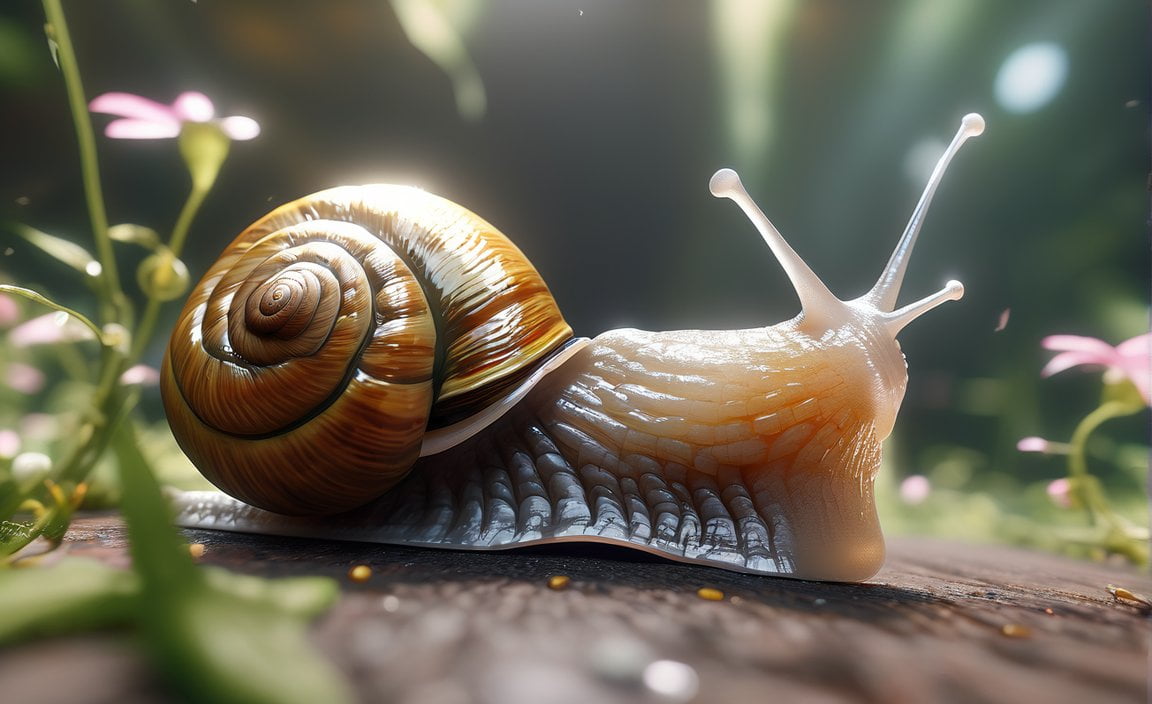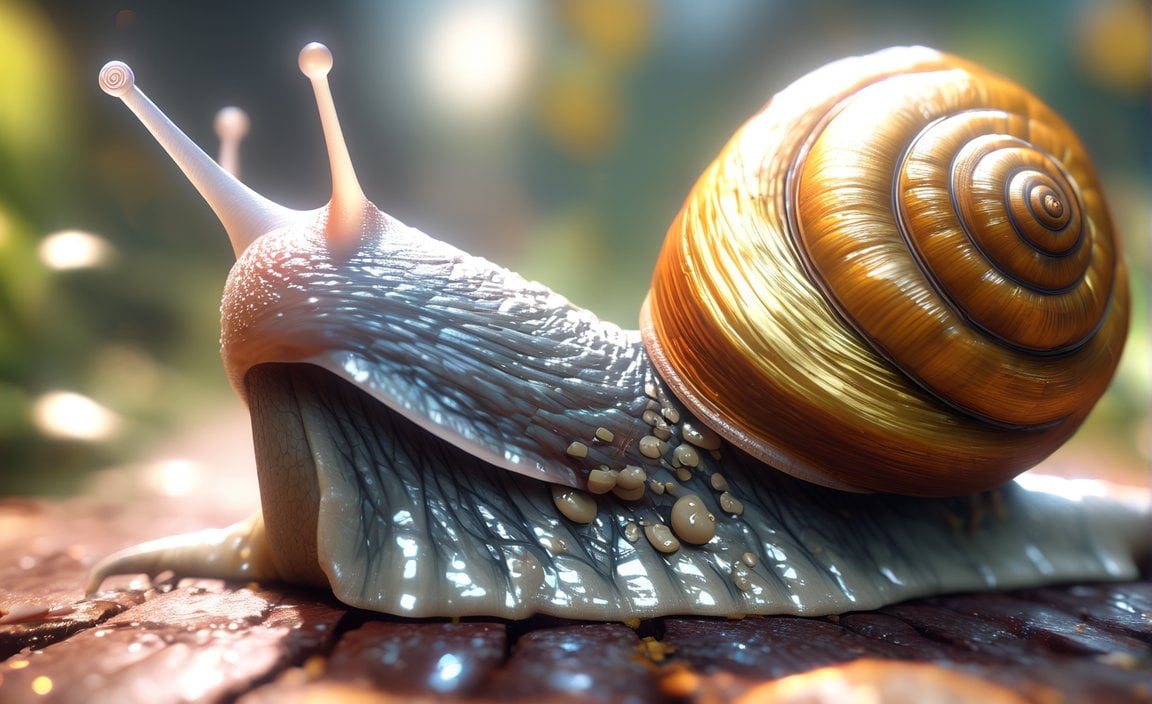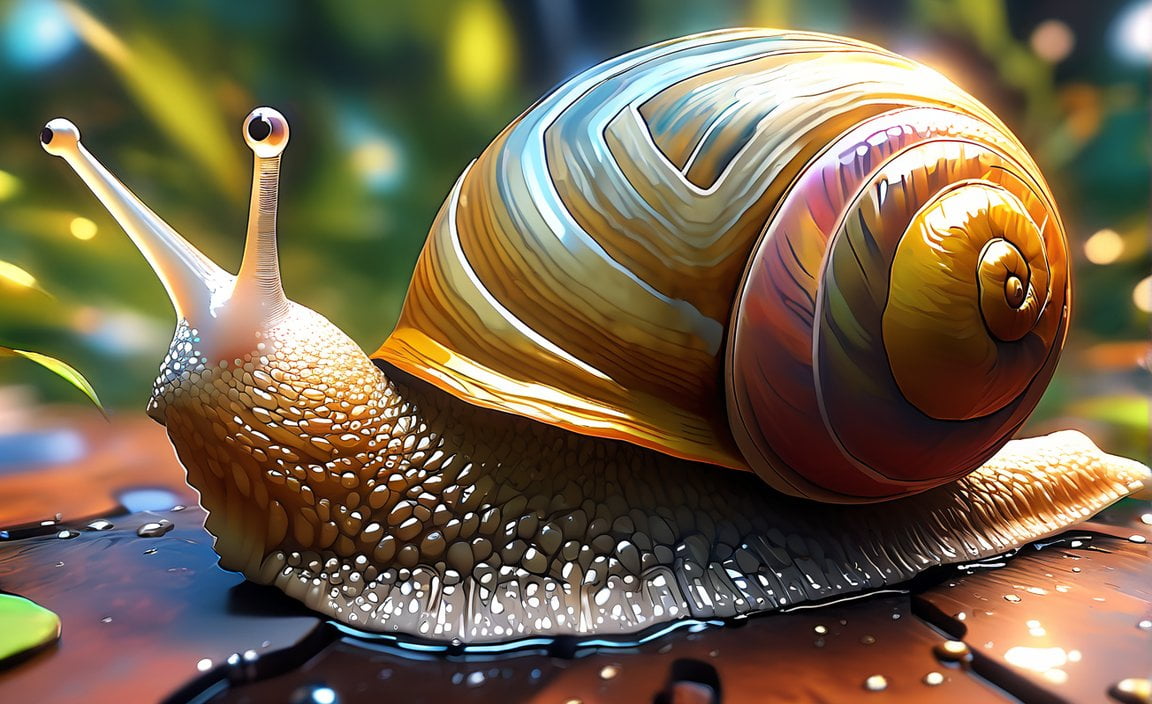The Fascinating World of Snails: Exploring Their Unique Adaptations and Ecological Significance
Snails, often underestimated and overlooked, possess a myriad of intriguing characteristics that warrant further exploration. From their remarkable adaptations to their crucial role in the ecosystem, these mollusks offer a captivating glimpse into the natural world. In this article, we will delve into the intricacies of snails, shedding light on their distinct adaptations and delving into their often-underestimated ecological significance. By understanding the characteristics and diet of these fascinating creatures, we can gain a deeper appreciation for the immense diversity and importance of the snail population. Let us embark on a journey through the captivating world of snails, where surprises await at every turn.
Key Takeaways:
- Snails are found in both aquatic and terrestrial habitats worldwide.
- They can be categorized into three types: aquatic snails, land snails, and others.
- Snails have a soft body and a hard shell, which serves as their protective covering.
- Their slow movement is facilitated by a muscular foot that secretes mucus.
- Snails occupy diverse environments such as gardens and oceans.
- The average lifespan of a snail ranges from 6 to 26 years.
- Snails are commonly associated with patience and perseverance due to their slow pace.
- They are often used as symbols to represent individuality and self-sufficiency, similar to humans.
- These key takeaways are based on information from synctechlearn.com and azquotes.com.
The Fascinating World of Snails: Exploring Their Unique Adaptations and Ecological Significance


Snails, those small creatures often overlooked in the grand scheme of the natural world, hold a myriad of intriguing secrets within their tiny bodies. With their soft bodies sheltered by hard shells, snails have managed to survive and thrive in diverse environments across the globe. From the depths of the oceans to the lush gardens of our backyards, these remarkable organisms have carved their own niche within the ecological tapestry.
Water, Land, and Everything In Between
One of the most remarkable aspects of snails is their ability to adapt to different habitats. While some snails prefer the serenity of aquatic environments, others have ventured onto land to explore new opportunities. And then there are those that occupy the in-between spaces, residing in areas where land meets water. No matter the location, snails have found innovative ways to make the most of their surroundings.
The Art of Slowness
Snails are perhaps best known for their leisurely pace, their leisurely crawl embodying the concept of patience and perseverance. While their sluggish movements might seem disadvantageous, they have evolved their own unique locomotion system. By secreting mucus from their muscular foot, snails glide smoothly over surfaces, making progress in their own unhurried way. It is through this slow, steady journey that snails teach us the value of taking our time and appreciating the beauty in every moment.
A Shell of Protection
The hard shells that adorn snails serve more than just an aesthetic purpose. These structures provide vital protection against predators and harsh environmental conditions. Composed mainly of calcium, the shells offer a robust shield for the vulnerable soft bodies within. Some snail species even have the remarkable ability to seal themselves within their shells, creating a secure haven until danger passes. This incredible adaptation is a testament to the ingenuity of these seemingly simple creatures.
Symbols of Individuality and Self-Sufficiency
Beyond their biological characteristics, snails have long fascinated humans as symbols of individuality and self-sufficiency. Just as each snail carries its unique shell, humans too possess their own distinctive qualities that set them apart. Additionally, the self-sufficiency of snails, relying on their own mucus-secreting foot to propel themselves forward, reminds us of the importance of resilience and independence in our own lives. Snails serve as gentle reminders that we all have the power to create our own paths, regardless of the pace at which we choose to traverse them.
Ecological Significance
While snails may seem insignificant in the grand scheme of ecosystems, they play vital roles in maintaining ecological balance. These tiny creatures serve as agents of decomposition, feeding on decaying matter and recycling nutrients back into the environment. Furthermore, snails act as a source of nourishment for various organisms higher up the food chain, making them essential contributors to the overall biodiversity of their habitats. By delving into the often-overlooked world of snails, we unlock a deeper understanding of the intricate web of life and the interconnectedness of all living beings.
The world of snails is a captivating realm filled with unique adaptations, humble wisdom, and ecological significance. As we delve deeper into their existence, we come to appreciate the beauty and complexity that lies within these seemingly unremarkable creatures. So, let us take a moment to marvel at the world of snails and the lessons they have to offer us about patience, individuality, and our place in the natural world.
Here are some interesting articles you might want to check out:
5 main rivers of Punjab: Punjab is home to some fascinating rivers. Explore the beauty and significance of these 5 main rivers that flow through this region.
5 types of environmental pollution: Environmental pollution is a pressing issue that affects us all. Discover the five different types of pollution that are causing harm to our planet and learn how we can combat them.
5 ways to reduce plastic pollution: Plastic pollution is a major concern for our environment. Find out five effective ways you can contribute to reducing plastic pollution and help protect our planet.
Don’t miss out on these insightful articles! Click on the hyperlinks to delve deeper into these topics.
Diet
Snails have a diverse and intriguing diet, which varies depending on their habitat and species. Most terrestrial snails, including land snails and other mollusks, are herbivorous, primarily feeding on plants, fruits, vegetables, algae, and occasionally fungi found in the soil[^1^]. They have a slow and unique way of moving using a muscular foot and mucus secretion[^1^]. Some land snails also consume dead organic matter and act as detritivores, helping to break down decaying material and recycle nutrients in the ecosystem[^1^].
The specific food choices of snails depend largely on their environment and species. Snails can also ingest sand and soil, which provide them with a rich source of calcium needed for their shell growth and maintenance[^3^]. When it comes to feeding pet or captive snails, it is crucial to provide them with suitable food options. Some popular food choices for pet snails include ripe produce, seeds, and specially formulated tortoise food that has been soaked in water[^2^]. It is recommended to boil hard fruits and vegetables before giving them to snails and wait for them to cool before feeding. However, it is important to avoid feeding snails foods containing sugar, salt, onions, citrus fruits, or highly acidic foods, as these can negatively impact their health[^4^].
Understanding the dietary preferences of snails is essential for their proper care and nutrition. By providing a suitable diet, snails can thrive in captivity and contribute to the balance of their ecosystems.
Key Takeaways:
- Snails have a diverse diet, primarily consisting of plants, fruits, vegetables, and algae.
- Some snails also consume dead organic matter and act as detritivores in the ecosystem.
- Snails ingest sand and soil to obtain calcium for shell growth and maintenance.
- Suitable food options for pet snails include ripe produce, seeds, and specially formulated tortoise food.
- Boil hard fruits and vegetables before feeding them to snails and avoid foods containing sugar, salt, onions, citrus fruits, or highly acidic ingredients.
References:
[^1^]: American Tarantula & Animals. (n.d.). Snail Diet: What Do Snails Eat and How to Feed Them Properly. Retrieved from source
[^2^]: Our Endangered World. (n.d.). Snails Habits and Biology. Retrieved from source
FAQ
Q1: What do snails eat?
A1: Snails have a varied diet depending on their habitat and species. Most terrestrial snails are herbivorous, feeding on plants, fruits, vegetables, algae, and occasionally fungi within the soil. They may also consume dead organic matter as detritivores.
Q2: What should I feed my pet snail?
A2: For pet snails, popular food choices include ripe produce, seeds, and tortoise food that has been soaked in water. It is recommended to boil hard fruits and vegetables before giving them to snails and wait for them to cool before feeding. However, avoid feeding them foods containing sugar, salt, onions, citrusy food, or high-acid foods as these can negatively affect their health.
Q3: How do snails move?
A3: Snails have a slow and unique way of moving by using a muscular foot and mucus secretion. They glide along surfaces, leaving behind a shiny trail of mucus that helps reduce friction and aids in their movement.
Q4: What are the predators of snails?
A4: Snails face a range of predators, depending on their habitat and species. Some of their predators include birds, mammals, reptiles, amphibians, and even other snails.
Q5: How long do snails live?
A5: The lifespan of snails can vary depending on the species and their environment. Generally, snails can live from a few years to several decades, with some species living up to 20 or 30 years.
- Senior at What Age: Benefits & Eligibility Guide - March 29, 2025
- Unlocking Senior Benefits: How Old is a Senior? Your Complete Guide - March 29, 2025
- Master Russian Politeness:A Guide to Saying Please - March 29, 2025
















